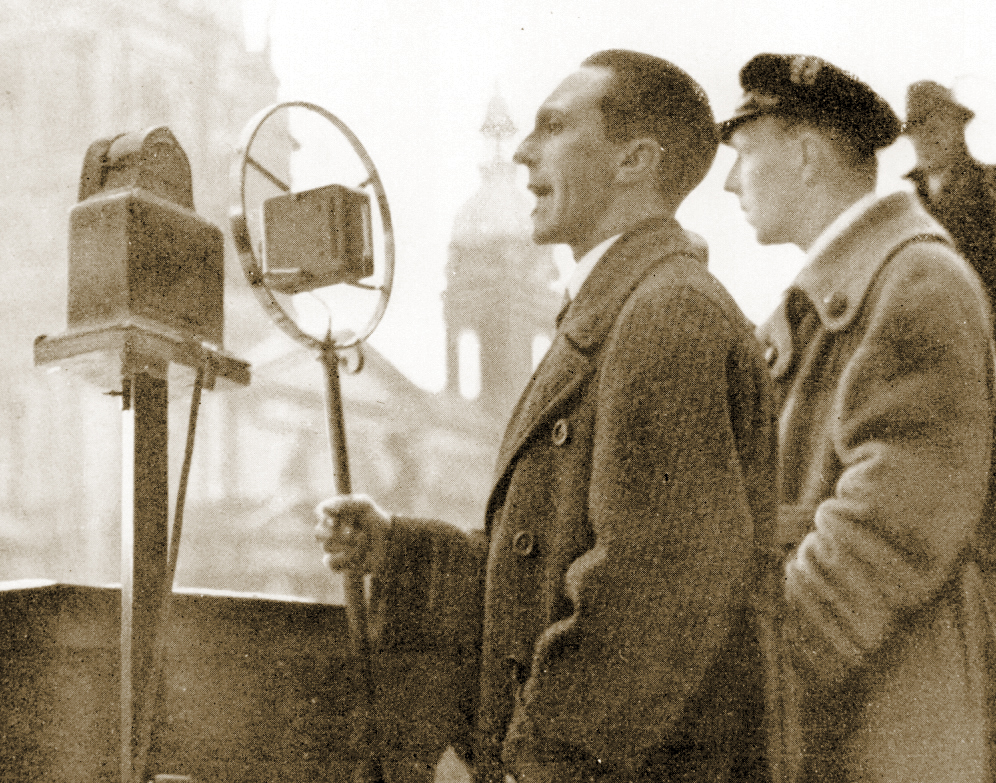Robert Walker Whitaker, perhaps best known for being the creator of “The Mantra,” a strategy to fight white genocide, died earlier this month.
Month: June 2017
Raciology, 3
At the 19th century’s end, scientific racism conflated Græco-Roman eugenicism with Francis Galton’s concept of voluntary eugenics to produce a form of coercive, anti-immigrant government programs influenced by other socio-political discourses and events. Such institutional racism was effected via craniometric skull and skeleton studies; thus skulls and skeletons of black people and other colored volk were displayed between apes and white men. In 1906, Ota Benga, a Pygmy, was displayed as the “Missing Link”, in the Bronx Zoo, New York City, alongside apes and animals.
The most influential theorists included the anthropologist Georges Vacher de Lapouge (1854-1936) who proposed “anthropo-sociology”; and Johann Gottfried Herder (1744-1803), who applied “race” to nationalist theory, thereby developing the first conception of ethnic nationalism.
The Dutch scholar Pieter Camper (1722-89), an early craniometric theoretician, used “craniometry”—interior skull-volume measurement—to scientifically justify racial differences. In 1770, he conceived of the facial angle to measure intelligence among species of men. The facial angle was formed by drawing two lines: a horizontal line from nostril to ear; and a vertical line from the upper-jawbone prominence to the forehead prominence.
Camper’s craniometry reported that antique statues (the Græco-Roman ideal) had a 90-degree facial angle, whites an 80-degree angle, blacks a 70-degree angle, and the orangutan a 58-degree facial angle—thus he established a racist biological hierarchy for mankind, per the decadent conception of history. Such scientific racist researches were continued by the naturalist Étienne Geoffroy Saint-Hilaire (1772-1844) and the anthropologist Paul Broca (1824-80).
In the 19th century, an early American physical anthropologist Samuel George Morton (1799-1851), collected human skulls from worldwide, and attempted a logical classification scheme. Influenced by contemporary racialist theory, Dr Morton said he could judge racial intellectual capacity by measuring the interior cranial capacity, hence a large skull denoted a large brain, thus high intellectual capacity. Conversely, a small skull denoted a small brain, thus low intellectual capacity; superior and inferior established. After inspecting three mummies from ancient Egyptian catacombs, Morton concluded that Caucasians and Negroes were already distinct three thousand years ago.
In Morton’s Crania Americana, based on craniometric data, he reported that the Caucasians had the biggest brains, averaging 87 cubic inches, Native Americans were in the middle with an average of 82 cubic inches and Negroes had the smallest brains with an average of 78 cubic inches.
In The Mismeasure of Man (1981), the historian of science Stephen Jay Gould argued that Samuel Morton had falsified the craniometric data, perhaps inadvertently over-packing some skulls, to so produce results that would legitimize the racist presumptions he was attempting to prove. A subsequent study by the anthropologist John Michael found Morton’s original data to be more accurate than Gould describes, concluding that “contrary to Gould’s interpretation… Morton’s research was conducted with integrity”. Jason Lewis and colleagues reached similar conclusions as Michael in their reanalysis of Morton’s skull collection.
In 1873, Paul Broca, founder of the Anthropological Society of Paris (1859), found the same pattern of measures—that Crania Americana reported—by weighing specimen brains at autopsy. Other historical studies, proposing a black race / white race, intelligence / brain size difference, include those by Bean, Mall, Pearl, and Vint.
One of the first typologies used to classify various human races was invented by Georges Vacher de Lapouge (1854-1936), a theoretician of eugenics, who published in 1899 L’Aryen et son rôle social. In this book, he classified humanity into various, hierarchized races, spanning from the “Aryan white race, dolichocephalic”, to the “brachycephalic”, “mediocre and inert” race, best represented by the Jew.
Vacher de Lapouge’s classification was mirrored in William Z. Ripley in The Races of Europe (1899), a book which had a large influence on American white supremacism. Ripley even made a map of Europe according to the alleged cephalic index of its inhabitants. He was an important influence of the American eugenist Madison Grant.
After the War of the Pacific there was a rise of racial and national superiority ideas among the Chilean ruling class. In his 1918 book physician Nicolás Palacios argued for the existence of Chilean race and its superiority when compared to neighboring peoples. He thought Chileans were a mix of two martial races: the indigenous Mapuches and the Visigoths of Spain, who where ultimately from Götaland in Sweden. Palacios argued on medical grounds against immigration to Chile from southern Europe claiming that mestizos who are of south European stock lack “cerebral control” and are a social burden.
WDH Radio Show – Episode 2
National Socialism contra White Nationalism
— Listen to it here! —
WDH hosts: Joseph Walsh, Jake F. and yours truly
Special guest: Blake
“WN is simply a stepping stone along the way, not a destination.” —Adit
At 34:40 we lost the connection. Sorry about the buzz sound and the conversational gap. We are still trying to learn how to use the software to avoid these problems and hope the audio will improve in the next podcasts.
Anyway, donate button has been relocated to the bottom of this page.
Julian, 3
Julian presiding at a conference of Sectarians
(Edward Armitage, 1875)
Priscus to Libanius
Athens, March 380
Yes, the edict is well known here, but the general feeling at the University is that despite its severe tone we are not apt to be persecuted. The schools are flourishing. The little Christians flock to us to be civilized, and I find them much like their Hellenist brothers. But then all young people seem to me more and more alike. They ask the same questions and they give you the same answers to the questions they ask you. I despair of teaching anyone anything, least of all myself. I have not had a new idea since I was twenty-seven.
That is why I don’t publish my lectures. Also, too many of us publish out of vanity or to attract students. At seventy-five (I am nine, not a dozen, years older than you) I am an empty flagon. Tap me and you will hear an awful hollow sound. My head is a tomb quite as empty as the one Jesus is supposed to have walked away from. I incline now to Crates and the early Cynics, less to Plato and the rest.
I am not in the least convinced that there is a Divine Oneness at the centre of the universe, nor am I susceptible to magic, unlike Julian, who was hopelessly gullible. I often thought Maximus exploited his good-heartedness. But then I never could endure Maximus. How he used to waste Julian’s time with his séances and arcane gibberish! I teased the Emperor about him once, but Julian only laughed and said, “Who knows through what door wisdom will walk?”
As to your publishing project, I am not at all certain that a sympathetic biography of Julian would have the slightest effect at this time. Theodosius is a military politician, impressed by bishops. He might of course sanction a biography of his predecessor simply because Julian is much admired to this day, though not for his philosophy. Julian is admired because he was young and handsome and the most successful general of our century. The people have a touching admiration for generals who win battles, which is why there are no heroes today.
But if Theodosius did permit a biography, it would have to avoid the religious issue. The bishops would see to that. And for ferocity there is nothing on earth to equal a Christian bishop hunting “heresy”, as they call any opinion contrary to their own. Especially confident are they on that subject where they are as ignorant as the rest of mankind.
Anyway, I don’t want to fight them, because I am one and they are many. And though I am, as you so comfortingly suggest, old and near the end of my life, I enjoy amazingly good health. I am told that I look no different than I did at forty, and I am still capable of the sexual act at almost any time. This vitality repels Hippia, who has aged noticeably in the last few years, but it seems to please various young women in a certain quarter of Athens which you doubtless have heard of—in novels of the Milesian school!
Do I make myself clear? I have no wish to be burned alive or stoned or tacked up to the door of a Christian church, or “charnel house” as Julian used to call them. You may be as brave as you like and I will applaud you in my heart. But I have no intention of writing a single sentence about Julian, fond as I was of him and alarmed as I am at the strange course our world has taken since the adventurer Constantine sold us to the bishops.
Julian’s memoir was written during the last four months of his life. It was begun in March 363, at Hierapolis. Nearly every night during our invasion of Persia he would dictate recollections of his early life. The result is a bit helter-skelter, for both as a writer and as a man he was swift and impulsive. He once told me that he would like to compose an autobiography of the order of Marcus Aurelius to Himself, but he lacked that writer’s discipline.
Julian was also influenced by Xenophon’s The March Upcountry, since Xenophon took much the same route we did seven centuries later. Julian’s interest in history was always lively, and he was a great sightseer. The resulting memoir is something of a hybrid; even so, Julian was often an engaging writer, and if he was not better it is because it is hard to be emperor, philosopher and general all at once. He was also indiscreet about everyone.
I hope you forgive him. I have done so. He suspected that he had very little time and he wanted to get everything said. As for his mysterious death, I have a theory as to what happened, which I will explain to you in due course.
I have never quite known what to do with this work. When Julian died, I took all his personal papers, suspecting that his Christian successors would destroy them. I had no right to these papers, of course, but I don’t regret my theft. I told no one about the memoir until I was back safe in Antioch, where I must have mentioned it to you the day you read us your famous eulogy. I was so moved by your eloquence that I betrayed my own confidence.
I am now having a fair copy made of the manuscript. You are misinformed if you think copying is cheaper here than at Antioch. Quite the contrary. The estimated cost will run to eighty gold solidi, which I suggest you send by return post. On receipt of the full amount, I will send you the book to use as you see fit. Only do not mention to anyone that I had any connection with the matter. I have not the slightest desire to endure martyrdom at this time, or ever.
I thought I had written you about your collection of letters. I did get the book and it was very thoughtful of you to send it to me. We are all in your debt for those letters, especially yours to Julian. They are wise. I know of no other philosopher so sensible of posterity as to keep copies of every letter he writes, realizing that even his most trivial effusion has, in the context of the large body of his work, an eternal value.
Hippia joins me in wishing you good health.
In defense of white sharia
by Sacco Vandal
Donald Thoresen recently wrote a criticism of the White Sharia meme, wherein he alleged that the proponents of the meme may perhaps be suffering from “self-hatred… and the internalization of white subservience.” As one of the genuine originators of the meme—which was first promulgated on my podcast, The War Room, in late 2016—I assure you: this is simply not the case.
In his piece, Thoresen wonders why anyone on the Alt Right would be “attracted to the brutality of the Islamic world” and advises those who enjoy the White Sharia meme to “decolonize themselves.” Unfortunately, it is Thoresen who needs to decolonize himself. He seems to have internalized the attempts of the darker races to meme our men into pacifistic, overly-civilized weaklings. Our enemies have facilitated this lie precisely in order to disarm us before moving in for the kill. But, in reality, barbarity is not foreign to us whites.
 We should never forget that Faustian man was once, not so long ago, the most vicious and barbaric player on the world stage. Oswald Spengler referred to early Western man as “the red-haired barbarian” of “Frankistan.” Whites did not conquer the entire Earth by being nice or civilized; Whites conquered the world by sailing into foreign lands and taking those lands by force. Vikings, Crusaders, and Conquistadores alike were all practitioners of rape, pillage, and plunder.
We should never forget that Faustian man was once, not so long ago, the most vicious and barbaric player on the world stage. Oswald Spengler referred to early Western man as “the red-haired barbarian” of “Frankistan.” Whites did not conquer the entire Earth by being nice or civilized; Whites conquered the world by sailing into foreign lands and taking those lands by force. Vikings, Crusaders, and Conquistadores alike were all practitioners of rape, pillage, and plunder.
But, alas, we have lost that barbarity. Our enemies have successfully memed us into cowardly weaklings.
____________
Read it all: here
Nature
 “National Socialism was not invented by Adolf Hitler, but is the conscious expression of the fundamental Laws of Nature governing our lives.”
“National Socialism was not invented by Adolf Hitler, but is the conscious expression of the fundamental Laws of Nature governing our lives.”
“As National Socialists we follow no other voice than the voice of Nature and no other ethic than the ethic of Nature, and we know only one mortal sin: to try to revolt against this ethic.”
“If the world does not accept National Socialism as its only hope of a future, man will be facing destruction. This will be a logical consequence of his continuous violations of the Laws of Nature.”
—Povl Heinrich Riis-Knudsen
Siege, 4
Serious steps
Hitler did not arrive at January 30th, 1933, in a dream. Nor was the NSDAP [National Socialist German Worker’s Party] itself an idle concoction. Hitler did not get off the ground politically until after he was thirty years of age, after he had been orphaned, after he had existed in the streets of Vienna, after he had gone through the horrors of the First World War.
The idea of National Socialism, the Swastika, the social ferment and disorder in Germany and Europe, even the very men who were to make up his winning team, every element was there, in place, active, just waiting for Hitler to appear as catalyst that would lead to the Machitergreifung [seizure of power] in 1933. At no point did Hitler, in his off-hours or his idle frustration, imagine that any idea, effort, or group would be “keen”, “swift”, “fun”, or “groovy”.
Everything that was done was done because it had to be done. Hitler, like the master that he was, with consummate skill, played the ball exactly where it lay, utilizing the forces and elements at hand around him, applying them effectively and appropriately, step-by- step, to victory.
Joseph Tommasi did the very same thing as Adolf Hitler. Perhaps his is the closest comparison to Hitler’s methodology to date. Was he a copy-cat, aping the Marxists? If he was, so was Hitler. In all frankness, he took the name SIEGE from an L.A. County Library book by that title which was devoted to the Weather Underground faction of the SDS [the militant Leftist group Students for a Democratic Society].
He took the name National Socialist Liberation Front from an earlier Movement effort at organizing Whites on campuses, a name, by the way, copied from the National Liberation Front of the Viet Cong. He let his hair grow long and wore olive drab fatigues. This and much more he adopted solely in order to “get with the times” and manners of the present day reality, in order to be effective.
And he was tremendously effective in the one year of life he had left to him from 1974 to 1975. Crackpot games and escapades don’t generally outlive their progenitors by a decade, going on to gain strength and influence and to set the pace for the rest of an entire school of thought.
I mention Tommasi and the NSLF as major landmarks in our desperate drive to get serious in our modus operandi. Even with Universal Order I retain the publication title of SIEGE as tribute to this fact. Getting a bit deeper, war is to politics what politics is to the Idea. Of course minus the Idea, all is futile, just like the “power” wielded by the System and the Jews. Tommasi was more of a great general than he was a philosopher.
He opened our eyes to strategy and tactics rather than the nature of our purpose. But is that not precisely what we are in direst need of? It won’t get there unless we put it there. Thinking about it, and writing about it won’t put it there. Only a serious, step-by- step program of organized action will bring it about. And not “treadmill” action but forward action.
Vol. XII, #7 – July, 1983
Titans
Food for thought from the prologue of March of the Titans: The Complete History of the White Race:
 Politically correct historians blame the rise and fall of the great nations of the past on politics, economics, morals, lawlessness, debt, environment, and a host of other superficial reasons.
Politically correct historians blame the rise and fall of the great nations of the past on politics, economics, morals, lawlessness, debt, environment, and a host of other superficial reasons.
As long as a civilization’s founding race maintains its territorial integrity and does not use large numbers of any other alien race to do its labour, that civilization will remain in existence.
In India, the invading Indo-Aryans established a strict segregation system to keep themselves separate from the local dark skinned native population. This system was so strict that it has lasted to this day and has become known as the caste system. However, even the strictest segregation (and Aryan laws prescribing punishments such as death for miscegenation) did not prevent the majority population from eventually swallowing up the ruling Aryans until the situation has been reached today where only a very few high caste Brahmin Indians could still pass as Europeans.
Exactly the same thing happened in Central Asia, Egypt, Sumeria and to a lesser degree, modern Turkey. Slowly but surely, as these civilizations relied more and more on others to do their work for them, or were physically conquered by other races, their population makeup became darker and darker.
Siege, 3
Mail-Order Revolution?
At the time of the first American Revolution the adversary was the King of England. This man could have been called a lot of things but he couldn’t be called evil. The enemy today is the U.S. Government itself and it is, by every standard of measure, the most evil thing that has ever existed on earth. This, once it has sunk home, should be a good enough indicator of the sort of struggle we have ahead of us.
I’m not going to agonize over “How evil is it?” because that would be typically Right Wing and a waste of time. Rather, I’m going to tell you what that means, or should mean to you if you claim to have the three big essentials for accomplishing anything that were set forth by George Lincoln Rockwell over twenty years ago: sufficient intelligence to perceive and understand; sufficient strength, courage and resources to act; and sufficient will to persevere in spite of whatever obstacle or hardship.
It means this: they’re not going to let us do it. It means that we’re going to have to do it in spite of them. Over their dead bodies.
Will this be done by any legally chartered, tax-paying outfit? Will it be done by any outfits that own land and have public headquarters? Will it be done by those with big bank accounts (by “big” I mean those that read in figures greater than four digits) who deposit, withdraw and earn interest? Will it be accomplished by strings of P.O. boxes? The best, most sobering question I can hit anyone with is: will this, the most evil system on earth, allow anything even remotely dangerous to pass through its own postal system, to apply for and get special bulk rate mail permits, etc.?
The answer is a flat no. Those who point to the dozens of outfits currently operating in an attempt to belie that statement are in a hopeless fog. Those who agree but qualify it with, “Up to a point”, may have hope left yet. Those who disagree totally would also believe we can win through the electorate, with the consent of the masses. Those who partially agree, I suppose, imagine we will have to fight a “partial” revolution.
Despite hopeful showings of any Nazi or Klan candidates at the polls, it amounts to nothing concrete; if they gain a lot of votes but fail to win the election they are as bad off as before because those voters haven’t got the guts to do anything more than pull a lever in secret… they’ll never make contact or provide support directly; and those that may win the election are in for the hassle of their lives dealing with “fellow Democrats”, etc., who are rabidly pro-Jew, pro-Black, if not outright Red. (But hats off to those few who try as they do lend to the revolutionary climate and help reveal by their results what the national pulse-rate is like, and what kind of potential support we might expect once a full-scale revolt is launched).
And here again, can you picture a scenario like this: that great “Silent Majority” has at last gotten fed up, found its wits and given the Nazis or the Klan a voter mandate. The Jews, the Blacks, and the assorted fanatic Reds, etc. least of all to mention the entrenched Capitalist System manned largely by sick, liberal Whites give up, say it was a fair fight, shake hands and turn it all over to us.
It’s just too crazy to contemplate. If it even started to look like we were verging on some kind of real power they’d go nuts and pull out all stops against us. It has even been predicted that they would go as far as to use H-Bombs against any large strongholds and I wouldn’t doubt it a bit considering the stakes.
It’ll be a real fight but it won’t be a fair fight. Matters of survival seldom are.
Vol IX, # 4, August, 1980

Racial theories in physical anthropology, 1850-1918
The scientific classification established by Carl Linnaeus is requisite to any human racial classification scheme. In the 19th century, unilineal evolution (a.k.a. classical social evolution) was a conflation of competing sociologic and anthropologic theories proposing that Western European culture was the acme of human socio-cultural evolution.
The proposal that social status is unilineal—from primitive to civilized, from agricultural to industrial—became popular among philosophers, including Friedrich Hegel, Immanuel Kant and Auguste Comte. The Christian Bible was interpreted to sanction slavery and from the 1820s to the 1850s was often used in the antebellum Southern United States, by writers such as the Rev. Richard Furman and Thomas R. Cobb, to enforce the idea that Negroes had been created inferior, and thus suited to slavery.
Charles Darwin
Darwin’s influential 1859 book On the Origin of Species did not discuss human origins. The extended wording on the title page, which adds By Means of Natural Selection, or the Preservation of Favoured Races in the Struggle for Life, uses the general term “races” as an alternative for “varieties” and does not carry the modern connotation of human races. The first use in the book refers to “the several races, for instance, of the cabbage” and proceeds to a discussion of “the hereditary varieties or races of our domestic animals and plants.”
In The Descent of Man, and Selection in Relation to Sex (1871), Darwin examined the question of “Arguments in favour of, and opposed to, ranking the so-called races of man as distinct species.” In Richard Weikart’s 2004 book From Darwin to Hitler: Evolutionary Ethics, Eugenics and Racism in Germany he wrote:
Darwin clearly believed that the struggle for existence among humans would result in racial extermination. In Descent of Man he asserted, “At some future period, not very distant as measured by centuries, the civilised races of man will almost certainly exterminate and replace throughout the world the savage races.”
The quoted passage, in full context, reads:
At some future period, not very distant as measured by centuries, the civilised races of man will almost certainly exterminate, and replace, the savage races throughout the world. At the same time the anthropomorphous apes, as Professor Schaaffhausen has remarked, will no doubt be exterminated. The break between man and his nearest allies will then be wider, for it will intervene between man in a more civilised state, as we may hope, even than the Caucasian, and some ape as low as a baboon, instead of as now between the negro or Australian and the gorilla. (The Descent of Man, 1871, Volume I, Chapter VI: “On the Affinities and Genealogy of Man,” pages 200-201).
Darwin contrasted the “civilized races” with the “savage races.” Like most of his contemporaries, except the naturalist Alfred Russel Wallace, he did not distinguish “biological race” from “cultural race.” Moreover, he noted that savage races risked extinction more from white European colonialism, than from evolutionary inadequacy. On the question of differences between races, Darwin wrote:
There is, however, no doubt that the various races, when carefully compared and measured, differ much from each other—as in the texture of the hair, the relative proportions of all parts of the body, the capacity of the lungs, the form and capacity of the skull, and even in the convolutions of the brain. But it would be an endless task to specify the numerous points of structural difference. The races differ also in constitution, in acclimatisation, and in liability to certain diseases.
Their mental characteristics are likewise very distinct; chiefly as it would appear in their emotional, but partly in their intellectual, faculties. Every one who has had the opportunity of comparison, must have been struck with the contrast between the taciturn, even morose, aborigines of S. America and the light-hearted, talkative negroes. There is a nearly similar contrast between the Malays and the Papuans, who live under the same physical conditions, and are separated from each other only by a narrow space of sea.
In An Essay on the Inequality of the Human Races (1853-55), Arthur de Gobineau (1816-1882), a French aristocrat and writer, proposed three human races and claimed that miscegenation would lead to the collapse of civilization. He established the equation of the terms “Germanic race” and “Aryan race.”



